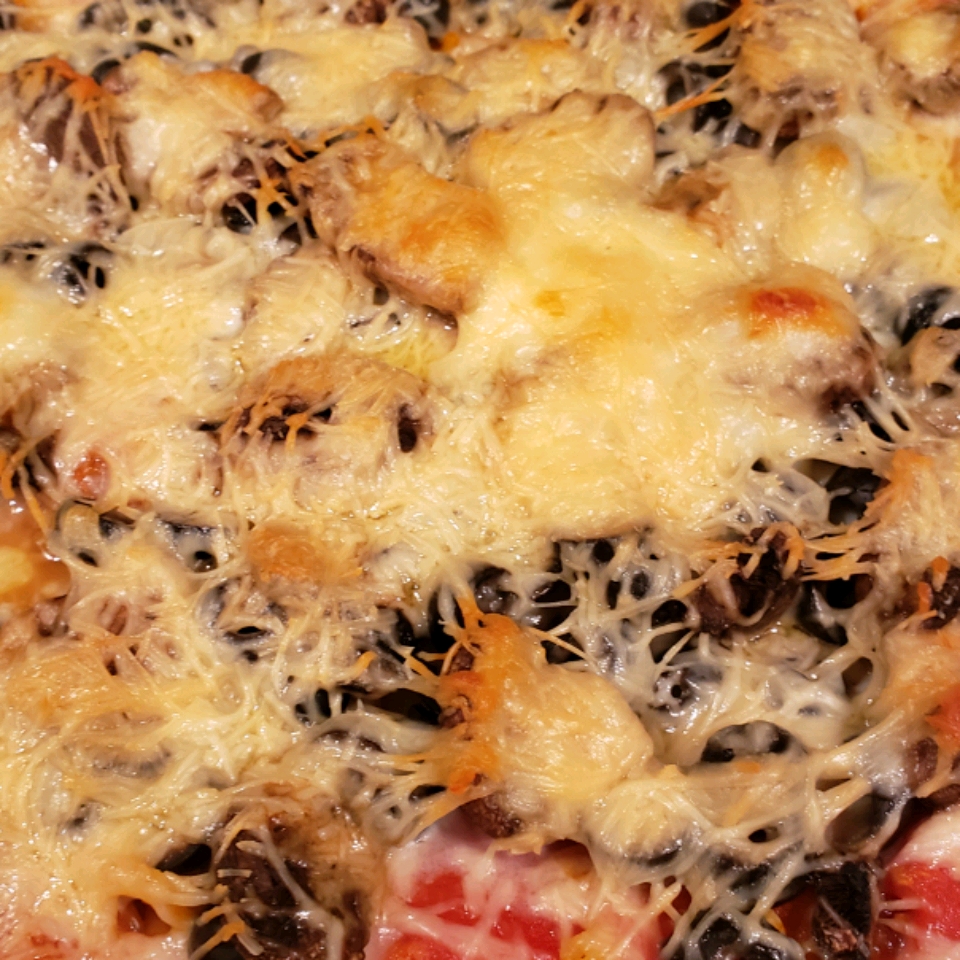Tamagoyaki, a savory and delectable Japanese rolled omelet, is a true culinary delight that captivates the taste buds with its fluffy texture, vibrant colors, and umami-rich flavors. This versatile dish, often served as a breakfast staple or a flavorful addition to bento boxes, has earned its place as a beloved delicacy in Japan and beyond. With its origins rooted in the Edo period, Tamagoyaki has undergone culinary refinements over the centuries, resulting in a variety of recipes that cater to different preferences and skill levels.
This article presents a comprehensive guide to crafting this delectable rolled omelet, featuring four distinct recipes that range from beginner-friendly to more advanced techniques. Each recipe is meticulously detailed, providing step-by-step instructions, a list of required ingredients, and cooking tips to ensure successful preparation. Whether you're a seasoned cook or just starting your culinary journey, you'll find the perfect Tamagoyaki recipe to suit your expertise and preferences.
The first recipe offers a classic approach to Tamagoyaki, guiding you through the basics of making a tender and flavorful rolled omelet. For those seeking a vegetarian alternative, the second recipe replaces eggs with silken tofu, resulting in a protein-packed and equally delicious version. If you're looking to impress your dinner guests, the third recipe introduces a sophisticated variation that incorporates succulent shrimp, adding an extra layer of savory goodness. Finally, the fourth recipe elevates the classic Tamagoyaki by adding a sweet and tangy twist with the inclusion of mirin and sugar.
With this collection of recipes, you'll embark on a culinary adventure, exploring the diverse flavors and techniques that make Tamagoyaki such a beloved dish. So, gather your ingredients, prepare your cooking utensils, and let's delve into the art of creating this Japanese rolled omelet that is sure to tantalize your taste buds and leave you craving more.
TAMAGOYAKI (JAPANESE ROLLED OMELET)
Tamagoyaki, a Japanese staple, is made by carefully rolling several thin layers of cooked egg into a rectangular omelet, which creates a soft and delicate texture. Traditionally, it's made in a special tamagoyaki pan, but this version also works with an 8-inch nonstick skillet. There are sweet and savory variations, and this recipe falls somewhere in between the two: The soy sauce, mirin and dashi pack it with umami, while the sugar adds a subtle sweetness. The technique can be challenging at first, but do your best to keep each layer consistent in color and each fold parallel to the last. Don't worry about little tears; they'll be covered up with the next layer.
Provided by Kiera Wright-Ruiz
Categories breakfast, brunch, dinner, for one, for two, lunch, snack, weekday, main course, side dish
Time 15m
Yield 2 servings
Number Of Ingredients 6
Steps:
- In a small bowl, combine eggs, mirin, soy sauce, dashi (if using) and sugar. Whisk until well combined.
- Heat 1 teaspoon oil in a tamagoyaki pan or a nonstick 8-inch skillet over medium. Using a small piece of folded paper towel, carefully wipe the excess oil from the pan and set aside paper towel (you will need it to grease the pan for each egg layer).
- Pour about 3 tablespoons of the egg mixture into the pan and quickly tilt the pan, swirling the egg mixture around to create an even layer. If there are thicker areas, gently poke a small hole at the thickest point with chopsticks and tilt and swirl the pan to cover exposed areas with more raw egg to form an even layer.
- After the layer is cooked, about 1 minute, using chopsticks or a rubber spatula, gently lift the egg edges on the farthest side to loosen the layer's grip. While tilting the pan, carefully fold the egg about 1/4 of the way toward yourself. Continue to fold the egg equally on itself until you have a narrow, rectangular omelet at the edge of the pan nearest you. Reduce the heat to medium-low if the egg is browning.
- Using the paper towel, lightly grease the exposed area of the pan. Pour another 3 tablespoons of the remaining egg mixture into the exposed area of the pan and quickly swirl it around to create another layer. Use chopsticks or a soft spatula to gently lift up the folded omelet and tilt the pan toward you so the raw egg mixture runs under the omelet.
- Once the layer is cooked, gently roll the omelet away from you in three to four flips. Repeat Steps 3 to 5 with remaining three layers, greasing the pan before each additional layer. The number of flips will decrease as the omelet grows in size with each additional layer.
- Transfer omelet to a cutting board or a plate when done. Cut crosswise into four pieces and rotate, cut side up, to show egg layers. (If using a nonstick 8-inch skillet, you can trim both ends of the omelet to make them even.) Serve immediately or chill for later.
TAMAGOYAKI (JAPANESE EGG OMELET) RECIPE BY TASTY
Here's what you need: dashi powder, salt, soy sauce, sugar, water, eggs, oil
Provided by Rie McClenny
Categories Breakfast
Yield 4 servings
Number Of Ingredients 7
Steps:
- In a small bowl, combine the dashi, salt, soy sauce, sugar, and water. Mix until everything is dissolved.
- In a medium bowl, beat the eggs and add the seasoning mixture. Mix until well-combined.
- Heat a tamagoyaki pan over medium-high heat. Brush a thin layer of oil on the pan.
- Pour a third of the egg mixture into pan and quickly swirl to cover the entire pan. When the egg is half-set, gently roll the egg.
- With the rolled egg still in the pan, pour in another third of the egg mixture. Lift up the rolled egg and let the mixture to flow under it. When the egg is half-set, roll the omelette toward you. Repeat with the rest of the egg mixture.
- Slice into bite-sized pieces.
- Enjoy!
Nutrition Facts : Calories 110 calories, Carbohydrate 1 gram, Fat 9 grams, Fiber 0 grams, Protein 4 grams, Sugar 1 gram
TAMAGOYAKI (JAPANESE ROLLED OMELETTE)

Sweet yet savory, Tamagoyaki (Japanese rolled omelette) makes a delightful Japanese breakfast or side dish for your bento lunches.
Provided by Namiko Chen
Categories Side Dish
Time 10m
Number Of Ingredients 10
Steps:
- Gather all the ingredients.
- Gently whisk the eggs in a bowl. It's best to "cut" the eggs with chopsticks in a zig-zag motion; do not overmix.
- In another bowl, combine the seasonings and mix well.
- Pour the seasonings mixture into the eggs and whisk gently. Then pour the mixture into a measuring cup with a spout and handle so that it'll be easier to pour into the frying pan.
Nutrition Facts : Calories 199 kcal, Carbohydrate 7 g, Protein 10 g, Fat 14 g, SaturatedFat 8 g, TransFat 1 g, Cholesterol 279 mg, Sodium 347 mg, Fiber 1 g, Sugar 6 g, ServingSize 1 serving
TAMAGOYAKI (JAPANESE ROLLED OMELETTE)

It's easy to make authentic Japanese food at home with this classic Japanese omelette recipe. Tamagoyaki is slightly sweet and seasoned with soy sauce, mirin, and dashi stock. It's a favorite in bento boxes and also makes an easy Japanese appetizer. Serve with shredded daikon and soy sauce for dipping.
Provided by ChefJackie
Categories 100+ Breakfast and Brunch Recipes Eggs Omelet Recipes
Time 25m
Yield 2
Number Of Ingredients 6
Steps:
- Whisk eggs, dashi stock, sugar, mirin, and soy sauce together in a bowl.
- Heat 1/3 of the oil in a large nonstick skillet over medium-high heat. Add about 1/3 of the egg mixture and quickly swirl the pan to evenly cover the bottom. Start rolling up the omelette from one side to the other as soon as it is set.
- Keep the roll to one side, then add another 1/3 of the oil to the skillet and another 1/3 of the egg. Swirl the pan, ensuring the entire bottom is covered, including around and underneath the first roll. Cook until set. Roll up from the side containing the first roll, so that is now at the center.
- Repeat the process with the remaining oil and egg. Transfer rolled omelette to a bamboo rolling mat. Roll up tightly and allow to cool for a few minutes.
- Unwrap the omelette and slice into 6 pieces. Serve warm or cold.
Nutrition Facts : Calories 208.6 calories, Carbohydrate 7.9 g, Cholesterol 372.3 mg, Fat 13.6 g, Protein 13.3 g, SaturatedFat 3.7 g, Sodium 260.2 mg, Sugar 7.8 g
TAMAGOYAKI: JAPANESE ROLLED OMELET
Steps:
- Gather the ingredients.
- Beat eggs in a bowl.
- Add dashi soup and sugar in the egg and mix well.
- Heat a tamagoyaki pan over medium heat. Oil the pan.
- Pour a scoop of egg mixture in the pan and spread over the surface.
- Cook it until half done and roll the egg toward the bottom side.
- Move the rolled egg to the top side.
- Oil the empty part of the pan and pour another scoop of egg mixture in the space and under the rolled egg.
- Cook it until half done and roll the egg again so that the omelet becomes thicker.
- Cook the omelet until done.
- If you are using a regular frying pan, shape tamagoyaki on bamboo mat.
- Cut tamagoyaki into 1-inch-thick pieces.
- Serve for breakfast, put in a bento as a side dish, or used as a filling in sushi.
Nutrition Facts : Calories 255 kcal, Carbohydrate 13 g, Cholesterol 372 mg, Fiber 0 g, Protein 13 g, SaturatedFat 4 g, Sodium 176 mg, Sugar 13 g, Fat 16 g, ServingSize 2 Tamagoyaki (2 Servings), UnsaturatedFat 0 g
JAPANESE OMELETTE (TAMAGOYAKI) RECIPE BY TASTY

Here's what you need: eggs, sugar, salt, sake, mirin, bonito dashi broth, oil, shiso leaf, japanese radish, soy sauce
Provided by Alvin Zhou
Categories Breakfast
Time 30m
Yield 2 servings
Number Of Ingredients 10
Steps:
- In a large mixing bowl, add the eggs, sugar, salt, sake, mirin, and broth, and mix well.
- Heat a tamagoyaki pan at over medium heat. Brush a thin layer of oil on the pan.
- Pour ⅙ of egg mixture into pan and quickly swirl to cover the entire pan. When the egg is set, gently roll the egg.
- With the rolled egg still in the pan, pour in ⅙ of the egg mixture. Lift up the rolled egg and let the mixture to flow under it. When the egg is set, roll the omelette toward you.
- Repeat, adding ⅙ of the mixture at a time, continuing to roll the egg into a large roll.
- Cut the tamagoyaki in half and pierce with a skewer.
- Serve with a shiso leaf, grated radish, and soy sauce.
- Enjoy!
Nutrition Facts : Calories 358 calories, Carbohydrate 12 grams, Fat 25 grams, Fiber 0 grams, Protein 18 grams, Sugar 3 grams
TAMAGOYAKI - JAPANESE ROLLED OMELET

Japanese rolled omelet is called tamagoyaki or dashimaki. It's also known as a Japanese-style egg roll. Tamagoyaki is often served for Japanese-style breakfast. Also, it's one of the most popular dishes in Japanese bento lunch boxes. There are many types of tamagoyaki. Some are sweet and some are salty. Also, you can add fillings in tamagoyaki to make it colorful. Create your favorite tamagoyaki! Posted for ZWT II '06
Provided by Cynna
Categories Breakfast
Time 30m
Yield 4 serving(s)
Number Of Ingredients 6
Steps:
- Beat eggs in a bowl.
- Add soy sauce, sugar, dashi, and green onion in the bowl and mix well.
- Heat little bit of vegetable oil in a square omelette pan on mid heat.
- Pour a scoop of egg mixture in the pan and spread over the surface.
- Roll the egg and move it the end of the top side.
- Oil the empty part of the pan and pour more egg mixture in the space and under the rolled egg.
- Cook it until half done and roll the egg again so that the omelette becomes thicker.
- Repeat this process until the egg mixture is gone.
- When omelette is done, remove it from the pan and put on a bamboo mat.
- Using the mat, shape the omelette. Cut into 1-inch pieces.
Nutrition Facts : Calories 205.9, Fat 18.6, SaturatedFat 2.5, Cholesterol 211.5, Sodium 238.6, Carbohydrate 3.1, Fiber 0.2, Sugar 2.7, Protein 6.7
TAMAGOYAKI (JAPANESE OMELET)

Make and share this Tamagoyaki (Japanese Omelet) recipe from Food.com.
Provided by Jen in Victoria
Categories < 15 Mins
Time 8m
Yield 3 serving(s)
Number Of Ingredients 7
Steps:
- Heat a small frying pan over medium heat. Using a paper towel, wipe a little bit of the oil over the pan; reserve the rest of the oil.
- Gently whisk the eggs in a bowl. It's best to "cut" the eggs with chopsticks in zig-zag motion and do not over mix it.
- Add the dashi, sugar, soy sauce, mirin and salt. Mix gently.
- Pour the mixture into a measuring cup with spout and handle (so that it'll be easier to pour into the frying pan).
- Pour a thin layer of egg mixture in the pan, tilting to cover the bottom of the pan.
- Poke the air bubbles to release the air. After the bottom of the egg has set but still soft on top, start rolling into a log shape from one side to the other.
- Move the rolled omelette to the side where you started to roll, and apply more oil to the pan with a paper towel, even under the omelette.
- Pour the egg mixture to cover the bottom of the pan again. Make sure to lift the omelette to spread the mixture underneath.
- Continue this process until all the egg mixture has been used up.
- Remove from the pan and place the omelette on a bamboo mat and wrap it up. Shape the egg when it is still hot. Let it stand for 5 minutes.
Nutrition Facts : Calories 121.7, Fat 9.3, SaturatedFat 2.1, Cholesterol 186, Sodium 244.6, Carbohydrate 2.7, Sugar 2.3, Protein 6.5
Tips:
- Use a nonstick frying pan for easy flipping and omelet removal.
- Use low heat to cook the omelet slowly and evenly.
- Do not overcook the omelet, as it will become dry and rubbery.
- If you are using a bamboo sushi mat, wet it with water before rolling the omelet.
- To make a thicker omelet, cook it in batches, stacking each cooked layer on top of the previous one.
- For a more flavorful omelet, add your favorite fillings, such as cheese, vegetables, or meat.
- Serve the omelet immediately with your favorite dipping sauce.
Conclusion:
Tamagoyaki, a staple of Japanese cuisine, is a versatile dish that can be enjoyed for breakfast, lunch, or dinner. It is a delicious and nutritious meal that is sure to please everyone at the table. With its simple ingredients and easy-to-follow instructions, tamagoyaki is a great recipe for home cooks of all skill levels.
Are you curently on diet or you just want to control your food's nutritions, ingredients? We will help you find recipes by cooking method, nutrition, ingredients...
Check it out »
You'll also love









